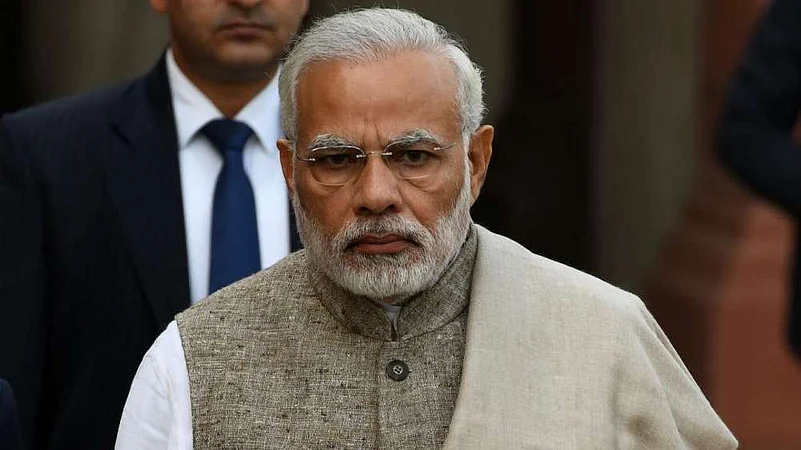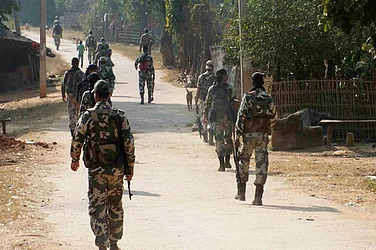A twenty five-year-old jobseeker, already sitting on a pile of rejection slips, was asked what was the most important event in the past decade, in Satyajit Ray's classic 1970 film, Pratidwandi(adversary).
"The war in Vietnam," he said. "Not man landing on moon?" he was asked back. When he replied in the negative, he was asked to explain. It was known that sooner or later man would land on moon, he began. But few realised the Vietnamese people had the "extraordinary power of resistance... It was plain human courage and it takes your breath away."
Likewise, the moment UPA-II began unravelling within a year of re-election in 2009, it became clear that India was heading for a change, for a new regime in which there were strong possibilities of Narendra Modi playing a major part. Yet, the first stones thrown at the ruling edifice were not by any of the Sangh parivar affiliates.
Advertisement
Rather, it was the youth which rallied at the call of people like Anna Hazare, Arvind Kejriwal, Prashant Bhushan and Kiran Bedi, tactically showcased by civil society, which rattled the government to the extent of almost delegitimising it. The RSS-BJP sensed the power of youth and backed this movement with RSS handlers of its students’ body, ABVP, mobilising its cadre for this movement.
Although middle classes, too, were mobilised, chiefly students and youth were mainstays of the anti-corruption campaign. The two communities were once again at the forefront of the protests against the horrific gang rape and murder in Delhi in December 2012 which further eroded the moral basis of UPA-II.
Advertisement
With government on a tailspin and the BJP resolving leadership matters by anointing Modi as its electoral mascot, it was clear the BJP-RSS combine was on the rise. After the extraordinary victory in 2014, ideological hegemonisation of India was on expected rise. The emphatic nature of Modi's re-election in 2019 may have surprised some, yet post-Pulwama, the direction of the verdict was never in doubt. With such a massive mandate, deliveries on contentious items on the Hindutva agenda too was on expected lines. From 'whether', it became a matter on 'when' insofar as abrogation of Article 370, Ram temple, triple talaq etc., were concerned.
This makes the return of the students and youth to the streets to protest the citizenship law remarkable. It is extraordinary because it is so close on the heels of the victory which resulted in much despair among BJP's adversaries. Yet, as numerous statements and actions of the regime suggest, there is no strategy of how to counter the opposition to the law. The worry is that the fight against CAA can slowly metamorphose into opposition on wider issues.
The prime minister is certainly aware of the potential of the ongoing agitation. This explains why in quick succession he has reiterated that youth must remain orderly and not resort to violence and anarchy.
Advertisement
First, he stressed on responsibility and duties of citizens. He said that being focussed solely on rights would not suffice. Second, and paradoxically, he lavished praise on youth for taking out their mobile phones to make videos of people who jump queues at cinema ticket counters or at airports. And this, at a time when large sections of students and youths are standing up in solidarity with those who are being singled out! And this, when the two demographic groups are raising national and international solidarity networks to safeguard the Constitution!
But there was a time when Modi did not have to force himself to be avuncular, a role which appeared innovative when he first donned it in 2014 at his first I-Day speech. At that time he sermonised people on matters of cleanliness and respecting women.
Advertisement
But, as prime minister of a government which is facing initial threats of being under siege or getting beleaguered, he has chosen overconfidence and being in denial. That's why he said youth love the system and disagree anarchy. Whereas, spontaneous movements never calculate the cost of rebellion.
This turn to his personality is ironical, for Modi rose in politics through the route of protests and clandestine operations. Would it not be prudent to recollect how he ferried proscribed literature during Emergency? By today's logic, did the twenty five-year-old who dressed himself as a Sikh and secretively ferried George Fernandes to a 'safe house', commit an anti-national act?
Advertisement
In an interview several years ago, when I was researching for his biography, the issue of public protests had come up. "In democracy the ultimate goal of protest is to spread political awareness or education," Modi had said. If these were not adequate advice for today's protestors, there was more to follow: "This is not the British Sultanate that only agitation will work. It is not necessary that every agitation should be successful... look at Mahatma Gandhi’s life... each agitation he started led to political awareness in a new area. He took it to a certain peak, then came down and rested for a while till the next battle. He would start another agitation and take it to another peak till the eventual goal was reached."
Advertisement
The Modi of 2012 had no doubt that "in democracy, the only way is through debate...(that) protest is a legitimate way of raising the voice of the people."
The practise of debate, right to dissent the value of protest which he espoused once has certainly been forgotten after ascending to power. This leads us to question if what was articulated previously was actually a matter of belief or just a tactical ploy to be seen on the right side of democratic values? Or if tactics, presented as legitimate while in opposition, become unlawful the moment one becomes the 'system'?
There is no knowing how long the current anti-CAA protest can be sustained and if it would acquire a wider character. But there is no denying that this phase of Indian politics has shown that the creative spirit and courage to protest has not got eroded among students and youth. As Modi himself said, it is not necessary for this agitation to reach the desired objective.
Advertisement
What is more significant is that mere participation has politicised large sections of a generation vested with the capacity to catalyse change. In today's era of growing endorsement of majoritarian ideology, even the smallest of expansion in the group dreaming of an inclusive Indian built on the principle of 'unity in diversity', is a net gain for democracy.
(The writer is an author and journalist. His first book was The Demolition: India at the Crossroad and his most recent one is The RSS: Icons of the Indian Right. Views expressed are personal.)




















